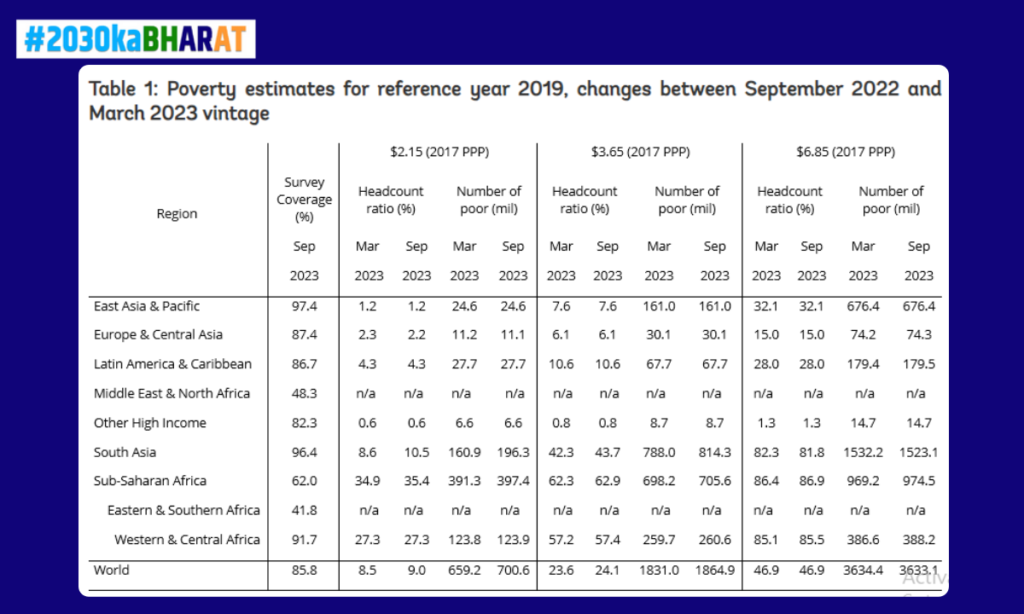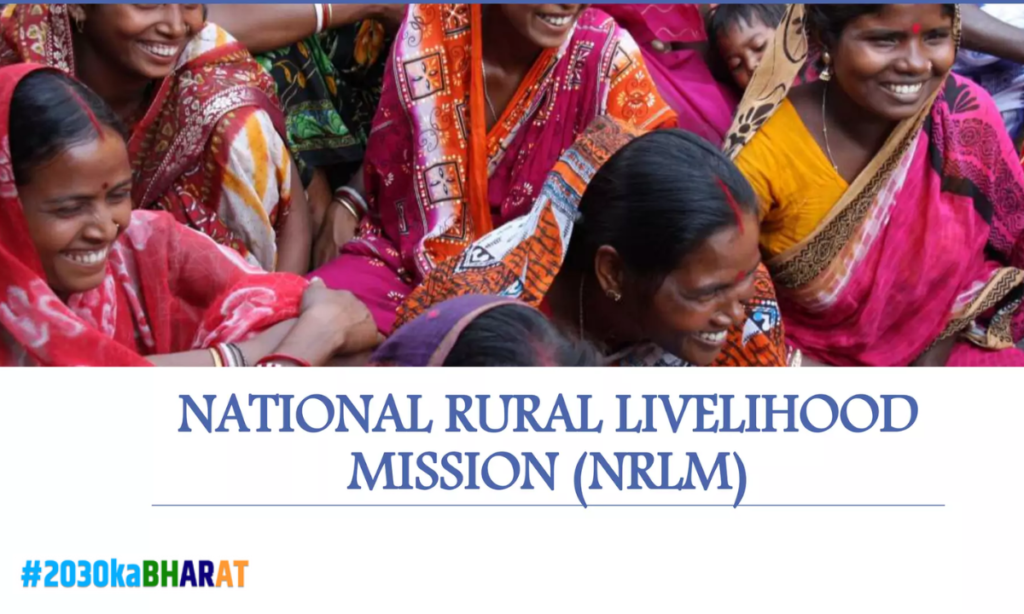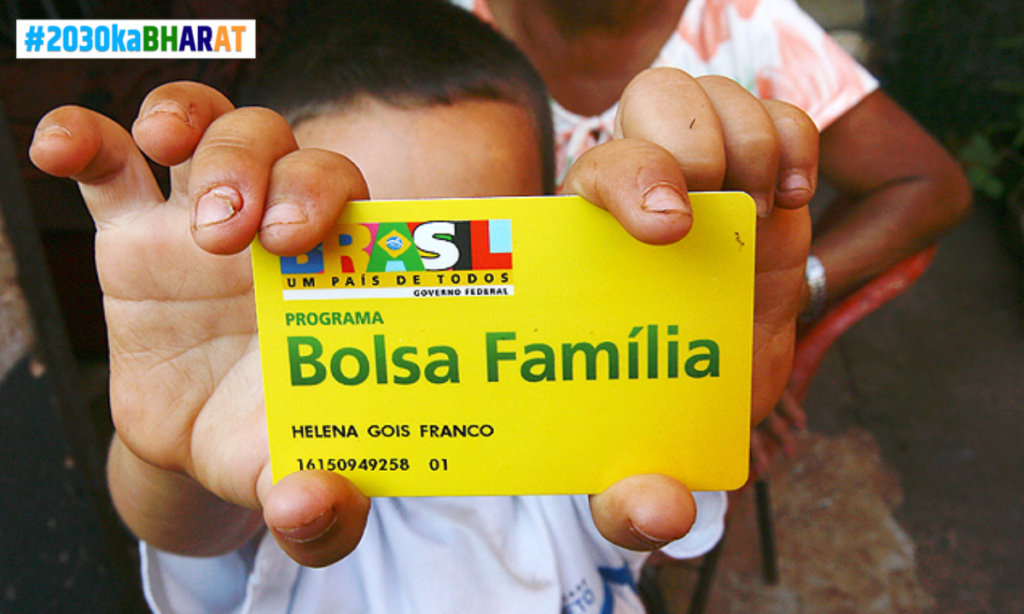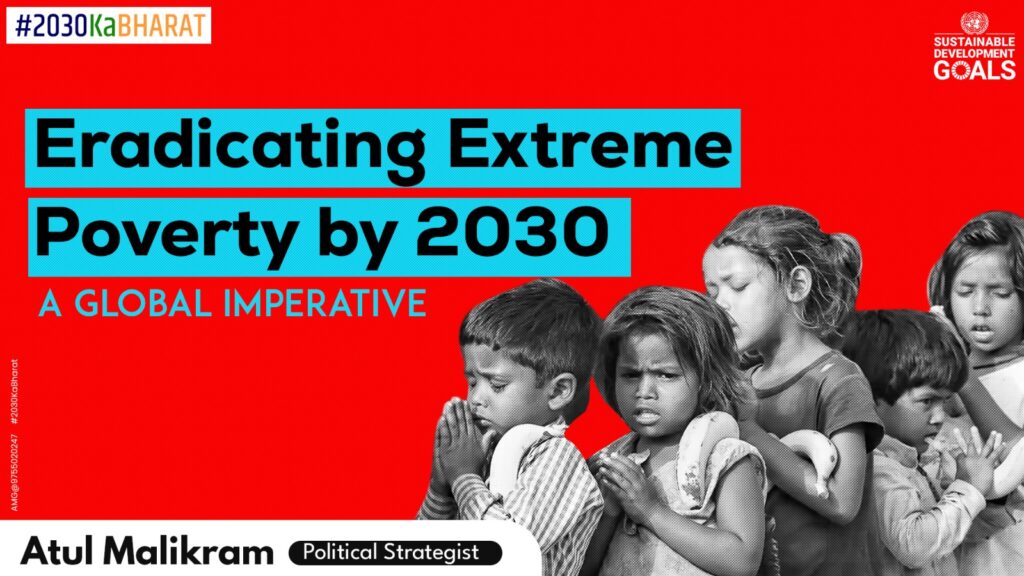Introduction of Eradicating extreme poverty
Eradicating extreme poverty by 2030 is not merely a goal; it is a moral and global imperative. The term “extreme poverty” refers to living on less than $1.90 a day, a condition that deprives individuals and communities of basic human needs. As we navigate the second half of the United Nations’ Sustainable Development Goals (SDGs), the urgency to address poverty becomes more pronounced. This article explores the multifaceted challenge of extreme poverty, with a special focus on India’s role in achieving SDG 1, known as “No Poverty.“
Understanding the Current Landscape of Extreme Poverty
Global statistics paint a stark picture. According to the World Bank, nearly 9.2% increase of the world’s population lived in extreme poverty in 2019. According to NITI Aayog’s National Multidimensional Poverty Index (MPI), India’s population living in multidimensional poverty was 14.96%. Regional disparities are evident, with a significant concentration of impoverished individuals in South Asia. India, with its vast and diverse population, plays a crucial role in shaping the global narrative on poverty.
Resources:
- What is the Status of Poverty in India? (NITI Ayog)
- September 2023 global poverty update from the World Bank
India’s poverty landscape is nuanced. While the country has made remarkable progress in reducing poverty rates, challenges persist. The Global Multidimensional Poverty Index (MPI) reveals that a substantial portion of India’s population experiences multidimensional poverty, encompassing factors such as health, education, and living standards.

The Sustainable Development Goals (SDGs) and Extreme Poverty
The United Nations’ SDG 1 No Poverty aims to end poverty in all its forms everywhere. Achieving this goal requires an integrated approach, acknowledging the interconnectedness of poverty with other global challenges. Progress on SDG 1 No Poverty is not just a national concern; it is a shared responsibility that demands collaborative efforts on a global scale.
India has committed to achieving the SDGs through its flagship programs and policies. The “2030kabharat” initiative exemplifies India’s dedication to meeting the SDG targets by 2030. The government recognizes that eradicating poverty is not only a development milestone but also a catalyst for achieving other SDGs.
Policies and Initiatives for Poverty Eradication in India
India has implemented various programs and schemes to address poverty. The Pradhan Mantri Jan Dhan Yojana, launched in 2014, aims to provide financial inclusion by ensuring access to banking facilities for all. Similarly, the Mahatma Gandhi National Rural Employment Guarantee Act (MGNREGA) guarantees a minimum of 100 days of wage employment in a financial year to rural households.
Direct Benefit Transfer (DBT) initiatives have streamlined subsidy delivery, ensuring that benefits reach the intended beneficiaries directly. These initiatives are crucial steps toward poverty alleviation, but their effectiveness requires continuous evaluation and refinement.
Addressing Root Causes of Poverty
To eradicate extreme poverty, addressing its root causes is paramount. Education and skill development play a pivotal role in empowering individuals to break the cycle of poverty. Initiatives like Skill India are instrumental in equipping the workforce with relevant skills, fostering economic growth and reducing unemployment.
Access to healthcare is another critical determinant. The Ayushman Bharat scheme, the world’s largest health insurance program, aims to provide financial protection and improve health outcomes for over 100 million vulnerable families. Gender equality and empowerment further contribute to poverty reduction by fostering inclusive economic development.
Infrastructure development, including reliable transportation and access to electricity, is essential for creating an enabling environment for economic activities. These factors collectively contribute to lifting communities out of extreme poverty.
Global Cooperation and Partnerships
Eradicating extreme poverty necessitates global collaboration. Developed nations play a vital role in supporting developing countries. Fulfilling financial commitments, technology transfer, and capacity building are key aspects of global partnerships. International organizations, including the World Bank and International Monetary Fund, can facilitate resource mobilization and provide technical assistance.
Leveraging technology and innovation is crucial for poverty eradication. Digital platforms can enhance financial inclusion, streamline service delivery, and empower communities. Collaborative research and development initiatives can address global challenges such as climate change, promoting sustainable development.
Overcoming Challenges and Roadblocks
While progress has been made, challenges persist. Socio-economic barriers, including caste-based discrimination and unequal access to resources, hinder poverty eradication efforts. Political will and effective governance are essential for implementing and sustaining poverty alleviation programs.
Climate change poses a significant threat, disproportionately affecting vulnerable communities. Implementing environmentally sustainable practices and building resilience are imperative components of poverty eradication strategies.
Case Studies and Success Stories
Examining successful initiatives provides valuable insights. India’s success in reducing poverty rates through programs like the National Rural Livelihoods Mission showcases the impact of targeted interventions. Learning from international success stories, such as Brazil’s Bolsa Família program, can inform strategies for poverty reduction.
Case Study 1: National Rural Livelihoods Mission (NRLM) – India
Background: The National Rural Livelihoods Mission (NRLM), launched in 2011, is a flagship program aimed at alleviating rural poverty. It operates under the Ministry of Rural Development and focuses on building sustainable livelihoods for rural households.
Key Components:
- SHGs and Federations: NRLM empowers women through the formation of Self-Help Groups (SHGs). These groups serve as platforms for financial inclusion, skill development, and collective decision-making. SHGs are further federated at the village and block levels, strengthening their impact.
- Skill Development: NRLM emphasizes skill-building initiatives to enhance employability. Training programs are designed to align with market demands, ensuring that individuals acquire skills relevant to their local economies.
- Access to Credit: Facilitating access to credit is a crucial aspect. NRLM promotes the concept of community-based financial institutions and provides revolving funds to SHGs, enabling them to extend loans to members for various income-generating activities.
Outcomes:
- Poverty Reduction: NRLM has contributed significantly to poverty reduction in the targeted regions. By empowering women and promoting entrepreneurship, it has created a sustainable pathway out of poverty for many households.
- Women’s Empowerment: The program’s focus on women’s participation has led to improved social and economic empowerment. Women in SHGs often take leadership roles, fostering a positive impact on community dynamics.

Case Study 2: Bolsa Família Program – Brazil
Background: Brazil’s Bolsa Família program, initiated in 2003, is a conditional cash transfer program designed to alleviate poverty and promote social inclusion. It has been recognized globally for its effectiveness in reducing income inequality.
Key Components:
- Conditional Cash Transfers: Families receive financial assistance on the condition that they meet certain criteria, such as ensuring their children attend school and receive regular health check-ups. This incentivizes education and healthcare utilization.
- Database Management: The program employs a sophisticated database system that identifies and targets beneficiaries accurately. This ensures that assistance reaches those who need it the most.
- Social Services Integration: Bolsa Família is integrated with other social programs, creating a comprehensive approach to poverty reduction. This includes access to education, healthcare, and vocational training.
Outcomes:
- Improved School Attendance: The conditionality attached to cash transfers has led to increased school attendance among children, breaking the cycle of intergenerational poverty.
- Healthcare Utilization: Regular health check-ups for children have contributed to improved overall health outcomes, addressing issues early and preventing long-term health-related poverty.
- Resources: Bolsa Família Program

Analysis and Implications:
These case studies offer valuable insights into effective poverty reduction strategies. Key takeaways include the importance of a multi-dimensional approach, community participation, and targeted interventions. Both India’s NRLM and Brazil’s Bolsa Família demonstrate the significance of empowering communities, particularly women, and integrating social services to address the root causes of poverty.
For India, these case studies highlight the potential impact of community-driven initiatives and the role of targeted skill development in creating sustainable livelihoods. Understanding the success factors of Bolsa Família provides valuable lessons for designing efficient conditional cash transfer programs.
Engaging Civil Society and Grassroots Movements
Civil society and grassroots movements play a pivotal role in holding governments accountable and advocating for policy changes. Nonprofit organizations, community-led initiatives, and social enterprises contribute to localized solutions. The “2030kabharat” initiative encourages active participation from all sections of society to collectively work towards poverty eradication.
The Way Forward to No Poverty
Setting realistic targets for 2030 requires continuous monitoring and adaptation of strategies. Governments, businesses, and individuals must align their efforts with the SDGs. Recommendations for strengthening global commitment include increasing investments in education, healthcare, and sustainable infrastructure.
Mobilizing resources requires a blend of public and private sector involvement. Public-private partnerships can drive innovation, create job opportunities, and contribute to sustainable economic growth. Inclusive economic policies, coupled with responsible corporate practices, form the foundation for a poverty-free world.
Conclusion
Eradicating extreme poverty by 2030 is not an aspirational goal; it is a commitment to building a more equitable and sustainable world. India’s journey towards achieving SDG 1 No Poverty is emblematic of the collective global effort required to uplift the most vulnerable populations. Through collaborative action, technological innovation, and inclusive policies, we can realize a future where no one is left behind. The imperative to eradicate extreme poverty transcends borders and demands the collective will of nations and individuals alike. It is not just a goal; it is a promise to create a world where poverty is an artifact of the past, and every person has the opportunity to thrive.
